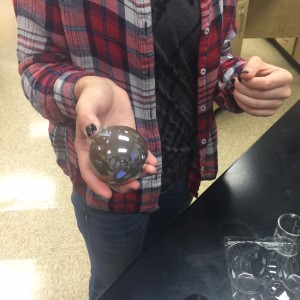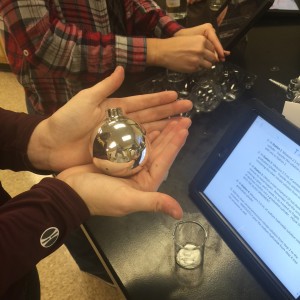Tollen’s Test is a laboratory test used to detect the presence of an aldehyde or keytone functional groups by an oxidation reaction. The result of a positive test is a precipitation of silver on the inside of the reaction vessel.



All three of our courses used Tollen’s Test to silver the inside of Christmas tree ornaments during finals week using this technique. It was a welcomed break from the rigor of finishing the crunch of assignments for the semester, and a nice memento from our time together. I do understand that this is a Christian holiday, and that we must be culturally responsive to all religions. As such, this may not be an activity appropriate in all settings, or may need to have vessels to silver for students who do not celebrate Christmas.
InTASC standards 5-7-8 were put to work on this task as content was planned for and applied. HLPs 6 & 13 were also used by the station work and partners that were integral to the success of this lab. Students really enjoyed completing this lab, and it was a welcomed break from the hectic bustle of Finals Week. Lots of them decorated the ornaments as gifts, or as mementos from our time together at Alexandria.






